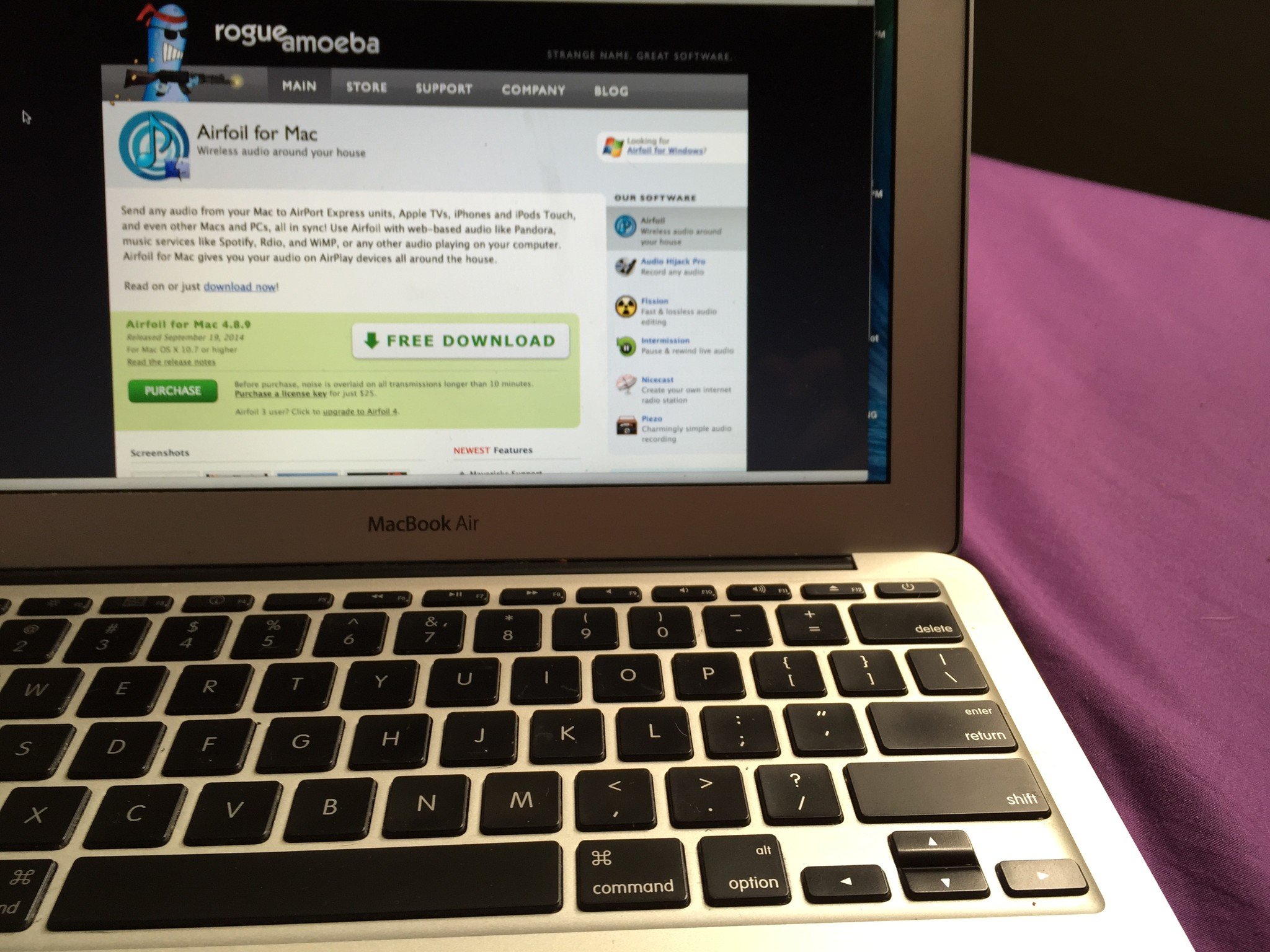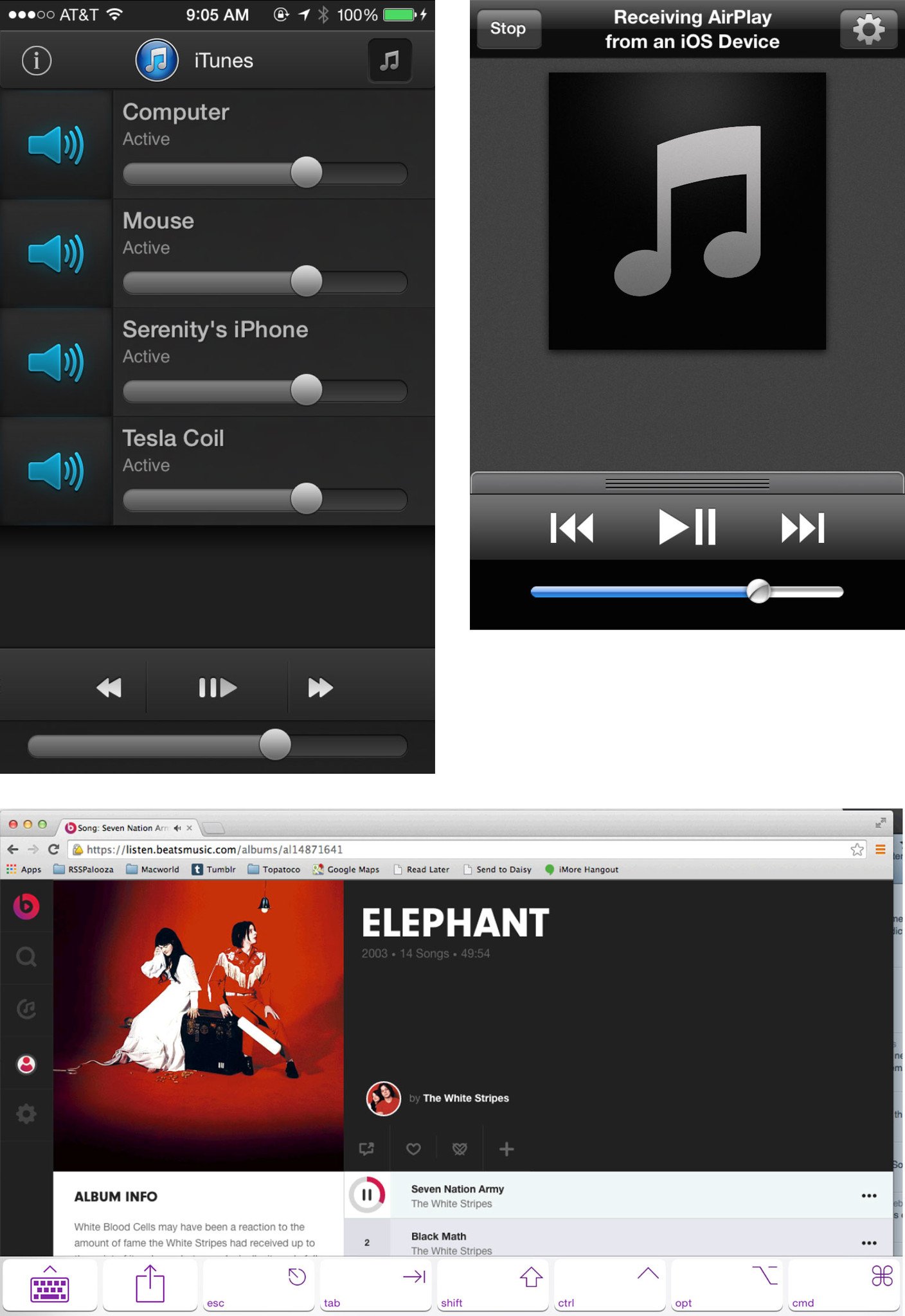How to hack together multi-room music with Sonos, Airfoil, and old iPhones

I love listening to music, soundtracks, and other aural miscellany while puttering around my apartment. Silence might be nice in some places, but when you work and live alone, there's something soothing about having some classic rock at your back while you're doing dishes or writing up an article.
I've collected a variety of speakers over the years for the various rooms of my house, but I'd never thought to try and hook them all together until last week, when I had the good fortune of acquiring a Sonos Playbar. If you're unfamiliar with the Sonos brand, the system hooks into your wireless network to allow you to remotely control and stream music to your Sonos speakers, all in unison. This is pretty great if you have multiple Sonos speakers, but I didn't quite have the cash flow to drop another few hundred bucks on a few Play:3s to set up around my apartment. And unfortunately, Sonos doesn't hook into AirPlay natively.
My first hack, as I use AirPlay to listen to almost everything, was to figure out how to wire the Playbar into my AirPlay network. The solution was actually pretty simple: Instead of hooking the speaker directly up to my television, I wired it to my Apple TV. Instant AirPlay bliss.
Granted, this wiring has some caveats: namely, I can't use the Playbar with any of my other TV accessories (Xbox, cable, etc). But given that 90 percent of my TV-using these days goes through the Apple TV and its associated channels anyway, it's not a bad trade-off. And if I really wanted to blast some Mass Effect soundtracks through the Playbar while enjoying my Xbox, it's easy enough to swap the optical audio cable from the Apple TV back to my television proper.
Once I hooked up the Playbar to the Apple TV, I started thinking. I couldn't afford a full Sonos system, but my two big studio speakers were now hooked up to an Airport Express and an Apple TV, respectively: It'd sure be cool if I could make them play music at the same time. And lucky for me (and you), there's a wonderful little app from Rogue Amoeba called Airfoil for just that purpose. Airfoil hijacks audio from any program on your Mac and subsequently pumps that audio to any AirPlay-capable receivers on your Wi-Fi network. There is a small audio delay as the data gets transmitted because of the AirPlay standard, so it's better for streaming music and podcasts than, say, the audio from Hulu or Netflix.

You'd think I'd be satisfied with two fully-operational speakers in my apartment, but I'd gone too far down the rabbit hole. You see, Rogue Amoeba also makes an app for iOS called Airfoil Speakers Touch which turns any Wi-Fi-enabled iOS device into an AirPlay receiver. So I took an old iPhone 4s and iPhone 5, installed Airfoil Speakers Touch, and hooked them up to two small speakers I had in my kitchen and bathroom, respectively. Within minutes, I was streaming audio from my Mac to four different speakers, the same music in every room. The power!
You're not just limited to controlling Airfoil from your Mac, either; you can install Airfoil Remote on an iOS device to gain access to your Airfoil controls while walking around your apartment.
Master your iPhone in minutes
iMore offers spot-on advice and guidance from our team of experts, with decades of Apple device experience to lean on. Learn more with iMore!
So there you have it: patched-together multi-room audio for only $25. Not as fancy as hooking together a couple of Sonos speakers, no, and it doesn't quite work for TV audio—but for my purposes, it's more than enough.
Serenity was formerly the Managing Editor at iMore, and now works for Apple. She's been talking, writing about, and tinkering with Apple products since she was old enough to double-click. In her spare time, she sketches, sings, and in her secret superhero life, plays roller derby. Follow her on Twitter @settern.

